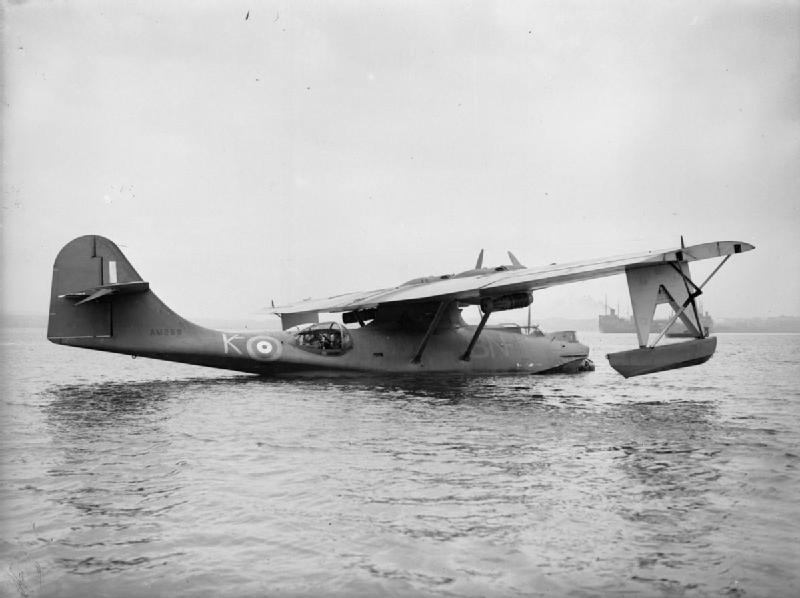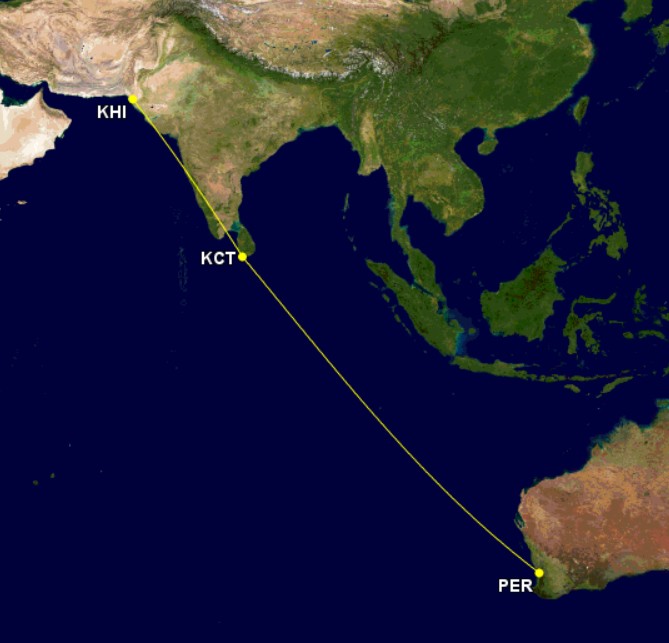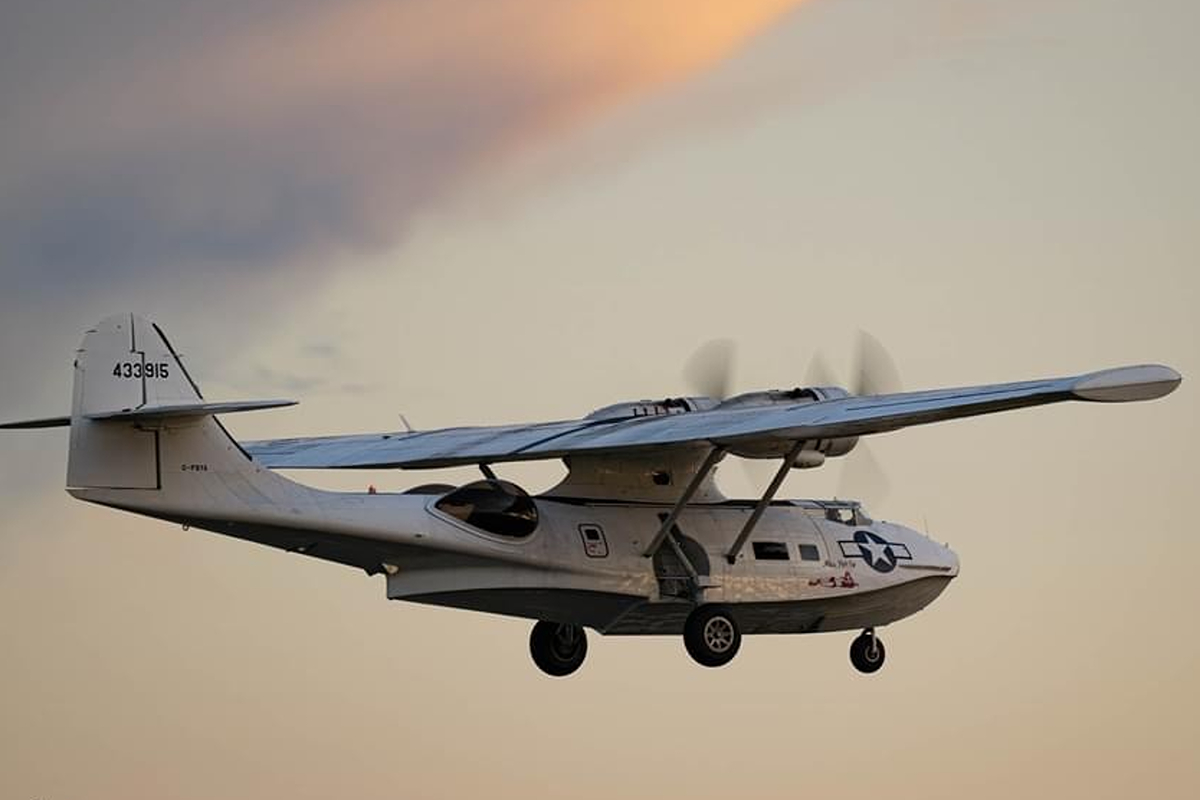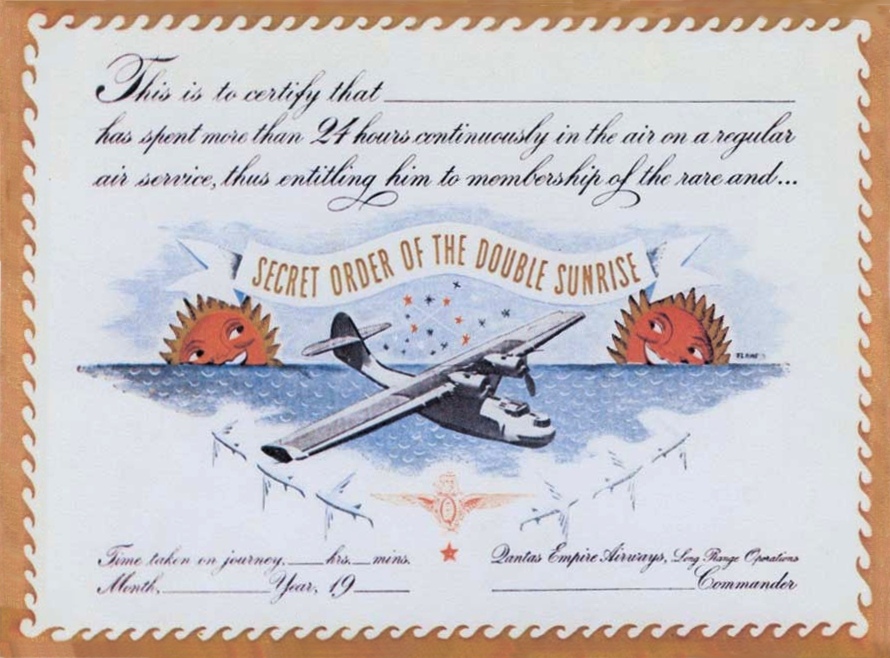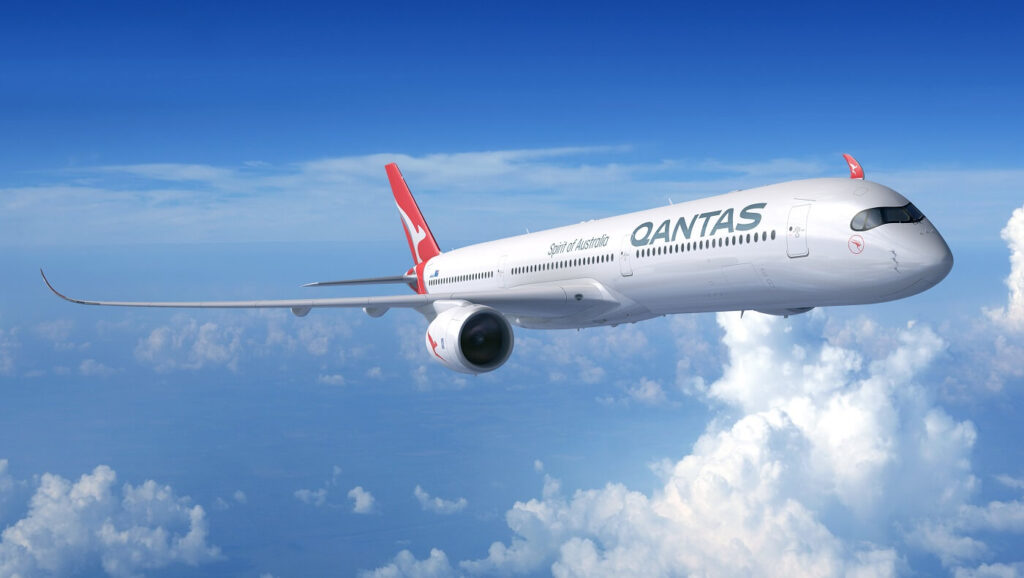Generally speaking, any commercial flight these days that exceeds ten hours (or so) is considered long, or at least certainly long-haul. Some of the longest airline flights operating today exceed even that length, with some lasting anything up to 17 or 18 hours flying time. Yet, as long as these flights may be, they are not even in contention for the accolade of the world’s longest-ever commercial passenger air service in terms of duration.
Even the world’s longest passenger air service today, Singapore Airlines’ daily flight from Newark Liberty International Airport (EWR) in New York to Singapore Changi Airport (SIN), a flight that covers 9,534 miles (15,255 km) and lasts around 18 hours and 40 minutes, barely comes close to taking the crown of the longest commercial flight in history.
With Australian airline Qantas proposing to operate the world’s first non-stop commercial flights from Sydney to London in 2027, a distance of 10,573 miles (16,916 km) and lasting around 20 hours, these flights will still not steal the crown from another Qantas flight that operated toward the latter stages of World War Two.
Known as the ‘Double Sunrise‘ flights, these flights lasted up to 33 hours in the air, long enough for passengers to observe two sunrises as they cruised toward their final destination. AeroTime explores the history of the Double Sunrise operation, the unique aircraft that was used to operate it, and why it is unlikely to ever be surpassed as the world’s longest-ever passenger-carrying service (in terms of duration).
Background
In 1943, with war raging across various theaters worldwide, commercial air services had largely been suspended. However, during that year, a unique operation was started under the auspices of a commercial airline service which remains the longest passenger airline service ever operated to this day in terms of flying hours.
The flights, given the nickname of the Double Sunrise operation, were inaugurated in 1943 to re-establish the vital diplomatic air link between Australia to England – a connection that had been lost due to the fall of Singapore to the Japanese in 1942. Singapore had been not only an allied stronghold in the region but a vital stopping-off point for flights between the UK and Australia.
While there was still a need for passengers to be able to travel between the two countries located on opposite sides of the world, there was also a requirement for mail, diplomatic papers, and other goods to be transported between the UK and Australia (and vice versa). As allies in the war and being closely cooperating nations under the banner of the Commonwealth, the two countries had benefited from decent pre-war air links for many years, started by Imperial Airways and Qantas Empire Airways in 1935.
Following secret discussions held between the two nations’ governments, as well as the leaders of their respective armed forces, it was decided that Royal Australian Air Force (RAAF) personnel would be seconded to a new special division of the Australian national airline Qantas to be set up to operate flights to restore the air link between the UK and Australia, albeit using a different routing and bypassing Singapore.
The new dedicated division of the RAAF was eventually tasked to fly Consolidated PBY Catalina flying boats from Western Australia to a Royal Air Force (RAF) base located at Lake Koggala in southern Ceylon in the Indian Ocean. Ceylon (now Sri Lanka) remained a heavily fortified British colony throughout WWII and was considered a haven where the Catalina service could operate to and from without enemy interference. Onward flights could then be operated from Ceylon to the Middle East, Europe, and ultimately to London, where the service would terminate several days later.
The Catalinas used for the Double Sunrise operation were all originally ordered by the UK Air Ministry for use by the Royal Air Force in various roles, including anti-submarine missions, coastal surveillance and reconnaissance, and maritime search and rescue. Five Catalina aircraft would eventually be supplied to the RAAF by the Air Ministry, with each allocated a name that matched stars used for navigation along the routes of the long flights, including ‘Rigel Star’, ‘Spica Star’, ‘Altair Star’, ‘Vega Star’, and ‘Antares Star’.
Despite the new flights effectively being operated by the RAAF, they would be flown using the Qantas name and brand with the few seats available on each flight being sold to commercial fare-paying customers.
About the route
Having carefully weighed up the options to establish a new air link between Australia and Ceylon, the authorities decided to use an existing RAAF seaplane base located in Crawley, close to Perth, in Western Australia. Here, the flights would operate to the Royal Air Force base at Lake Koggala close to the major city of Galle in Ceylon.
The Double Sunrise route would later be extended to serve Karachi in British India (now part of Pakistan). Karachi was at that time the southernmost point on the vital empire route from London, operated at that stage by British Overseas Airways Corporation (BOAC), a predecessor to British Airways.
Once up and running, the flights to Ceylon became the longest non-stop air route of any airline at that time in terms of duration. Covering a distance of a little over 3,500 nautical miles (4,020 statute miles or 6,480 km), the route was almost entirely flown over the Indian Ocean, with almost none of the flight operating over land.
The specific route flown by the Catalinas was from the Crawley RAAF seaplane base to the town of Exmouth, Western Australia. There, the aircraft would head out on its long oceanic flight, making for Cocos Island or Christmas Island in the Indian Ocean, before tracking directly to Galle in Ceylon (denoted on the map below as KCT).
With the Catalina having a relatively low cruising speed of around 125 mph (200 kph), each flight would take anything between 27 and 33 hours, depending on the winds along the route. The departure from Western Australia would be meticulously planned later in the evening so that the aircraft would fly over Japanese-occupied territories in East Asia during the hours of darkness, giving the flights a degree of conspicuity.
Given the timings of the westbound flights to Ceylon, the passengers onboard would observe two sunrises as they were airborne for so long, hence the nickname. Once the Double Sunrise service was established, the operation ran weekly in either direction, allowing the crews time to rest and recover in Ceylon before heading back to Australia.
initially, an onward connection between Galle and Karachi (denoted as KHI on the map above) was offered to passengers using lengthy and rather precarious surface transport. However, in due course, and in the interests of time, this was soon replaced with the Catalinas flying onwards from Galle to Karachi to meet up with the weekly BOAC service from London to Karachi to provide a complete UK to Australia air bridge.
Qantas eventually gave the Double Sunrise operation the official name of the ‘Kangaroo Service‘, and the flight also marked the first time that Qantas’s now-famous ‘Flying Kangaroo‘ logo was used on the side of an aircraft – a tradition that continues today.
About the Qantas Catalinas
With the requirement for an aircraft that could sustain lengthy over-water operations, often in harsh flying conditions, the rugged PBY Catalina was ideally suited for the role, and luckily, the RAF had a handful to spare. Due to their design, including an expansive fuel tank embedded within the aircraft’s enormous wing (spanning 35 meters or 104 feet), the aircraft had been specifically designed by the Consolidated Aircraft Corporation in the US to fly long over-water missions.
Their ability to operate from water runways gave them added operational flexibilities that conventional aircraft did not have, by eradicating the requirement for paved runways at physical airfields.
Having been stripped of all non-essential equipment for the ultra-long flights, including all unnecessary de-icing equipment and cabin insulation, the average take-off weight for the Catalinas was around 35,000 lbs (16,000kg). Given that the maximum take-off weight for the Catalina is 35,400 lbs (16,100kg), including a maximum fuel load of 1,988 imperial gallons (9,040 liters), the Double Sunrise Catalina operated as close to their maximum range as it was possible to get.
This fuel load gave the Catalinas a range of 4,140 miles (6,700 km). With the Double Sunrise route covering around 4,100 miles (6,630 km), the margins were slim. With no possibility of air-to-air refueling and with no en-route refueling points available, the payload on the nonstop Catalina flights was severely limited. The average load on each flight was just three passengers and 69kg (159 lbs) of essential and often sensitive mail and diplomatic papers.
Additionally, the record-breaking flights were operated without radios, as long-range wireless radiotelephonic equipment had not yet been adequately developed to provide coverage over large swathes of ocean. Without adequate radio navigation equipment, the flight crews operating the flights had to rely on rudimentary navigation techniques including celestial navigation (using stars as navigational tools) alongside maps and compasses to navigate their course, with an onboard navigator as part of the crew providing these services to the pilots.
In total, The Double Sunrise Catalinas made 271 crossings in each direction between July 1943 and June 1945. During that time, the flights carried 860 passengers and delivered over 4,500 kg (10,000 lb) of essential mail items.
What happened to the Catalinas involved?
In 1944, Qantas augmented the Catalinas deployed on the Double Sunrise route with converted Consolidated B-24 Liberator bomber aircraft, freed up as the war effort began to wind down. The Liberators were able to fly a shorter 3,077-mile (4,952 km) route from an RAAF airfield near Learmonth, Western Australia to an RAF base northeast of Colombo, the capital of Ceylon.
However, with a faster cruise speed and improved payload, the Liberators could perform the journey in 17 hours carrying 2,500 kg (5,500 pounds ) of payload. Eventually, in July 1945 and with the War over, both types were replaced by Avro Lancastrians, converted from wartime Avro Lancaster bombers into passenger-carrying roles.
With their unique task dutifully and successfully completed, there would be no pomp or ceremony to mark the special achievements of the five Double Sunrise Catalinas. Despite having set a new record for the world’s longest commercial air service, a record that still stands eight decades later), the aircraft deployed on the flights were quietly retired from service.
With the war over, neither the RAF nor the RAAF had any further use for the aircraft, so as prescribed under the terms of the original supply contract with the UK Air Ministry, each was unceremoniously scrapped by scuttling (being deliberately sunk).
Secret order of the Double Sunrise
All 870 passengers who were able to experience flying on the Qantas Double Sunrise flights were handed a certificate upon their arrival in Ceylon. Displaying an image of a Catalina on its face, the unique certificates declared the holder of having entered the role of the ‘The ‘Secret Order of the Double Sunrise‘. The certificates were issued not only as a memento of their record-breaking flight but also to mark that the holder was one of only a few people in the world who had been on a commercial flight that had exceeded 24 hours in duration.
In commemoration of the ground-breaking Double Sunrise wartime flights, when Qantas first mooted the possibility of nonstop flights between Sydney and London in August 2017 using ultra-long-range Airbus A350s, the program was given the working title of ‘Project Sunrise’ – a moniker that has since become synonymous with the program.
Additionally, the lucky few passengers who had the opportunity to travel on a trial nonstop flight from Sydney to London operated by a Qantas Boeing 787-9 Dreamliner in November 2019, were each handed a replica ‘Secret Order of the Double Sunrise’ certificate as a historic nod to the airtime efforts of the Qantas Catalina, the brave airmen that operated them, and a bygone era of record-breaking air travel.
Long-haul flights of tomorrow
Despite the numerous wartime challenges faced by all those who devised the Double Sunrise flights, along with the elite airmanship and dedication of the crews that operated them, the landmark Double Sunrise operation effectively paved the way for the development of modern long-distance commercial air travel – a privilege that many of us continue to enjoy decades later.
When the first of Qantas’ Project Sunrise flights finally takes off from Sydney’s Kingsford Smith International Airport (SYD) in early 2027, the minds of those on board will no doubt turn to the endeavor and resilience of the aircrews and passengers that made it all possible. As those modern-day Double Sunrise passengers take their first sip of the complimentary champagne on that celebratory flight, may they raise their glass to their contemporaries who went before.
In the modern era, a long-haul flight involves sitting in a relatively safe, warm modern airliner with all the creature comforts that you have come to expect. Hot meals, USB charging ports, dimmable window blinds, and as many inflight movies that the passengers can consume as they while away the hours before they land are just a few of the amenities that passengers can avail of during their journey.
However, spending hour after hour crossing the ocean in a noisy, unheated, cramped, and minimally equipped Catalina flying boat would not have been an enjoyable experience, and those who flew on the original Double Sunrise flights were true aviation pioneers.
In terms of the aircraft, although the dedicated fleet of five Qantas Catalinas is long gone, the type’s place in the aviation history books is secured, with its enduring legacy cemented through its numerous key roles during WWII. With around 3,300 Catalinas built (of all variants) but only around ten airworthy examples remaining worldwide, its ability to conquer vast distances and fly longer than any other aircraft of its generation has confirmed the Catalina’s place in aviation history.
And with the feasibility of any two cities anywhere on the planet being connected by modern airliners in less than 24 hours nowadays, the Catalina’s record for the longest-ever commercial air service is unlikely to be broken.


